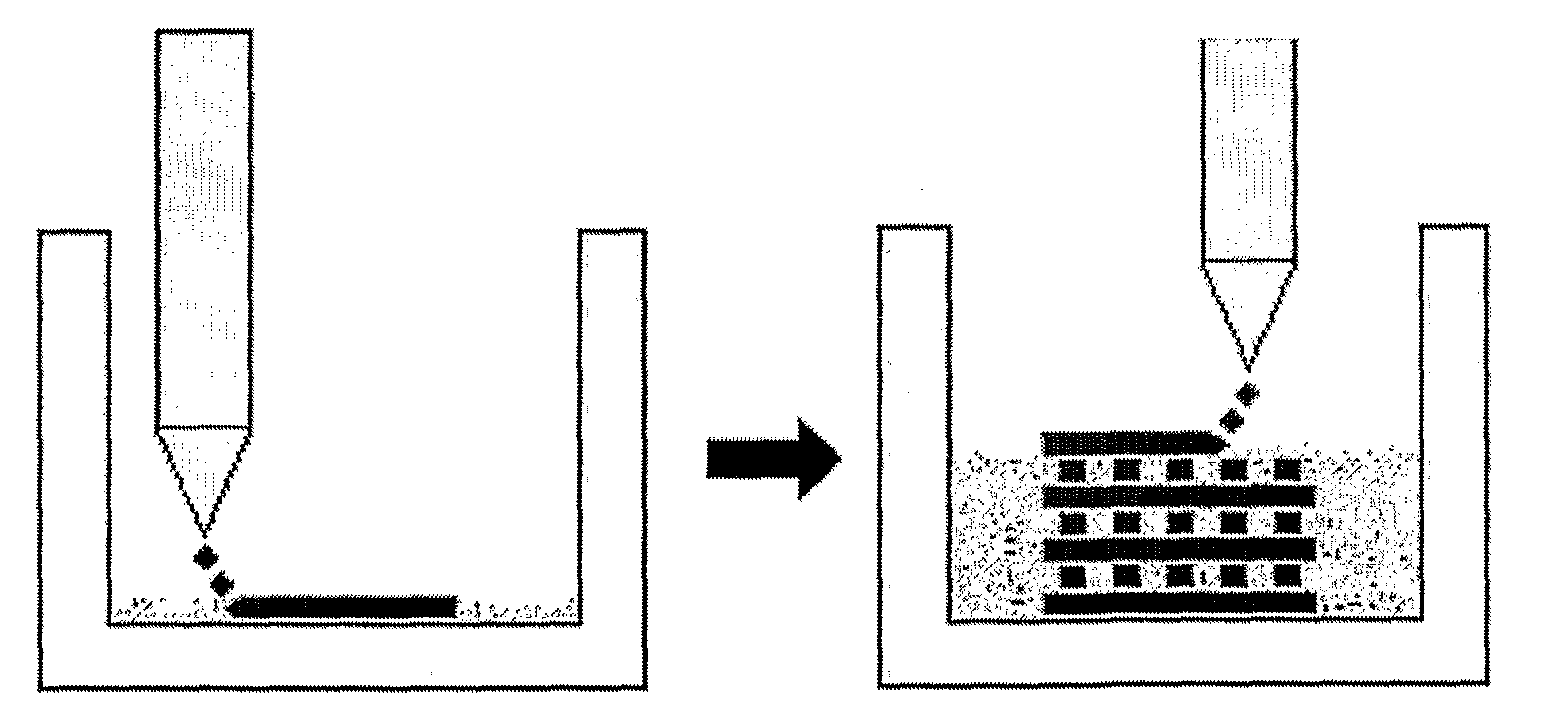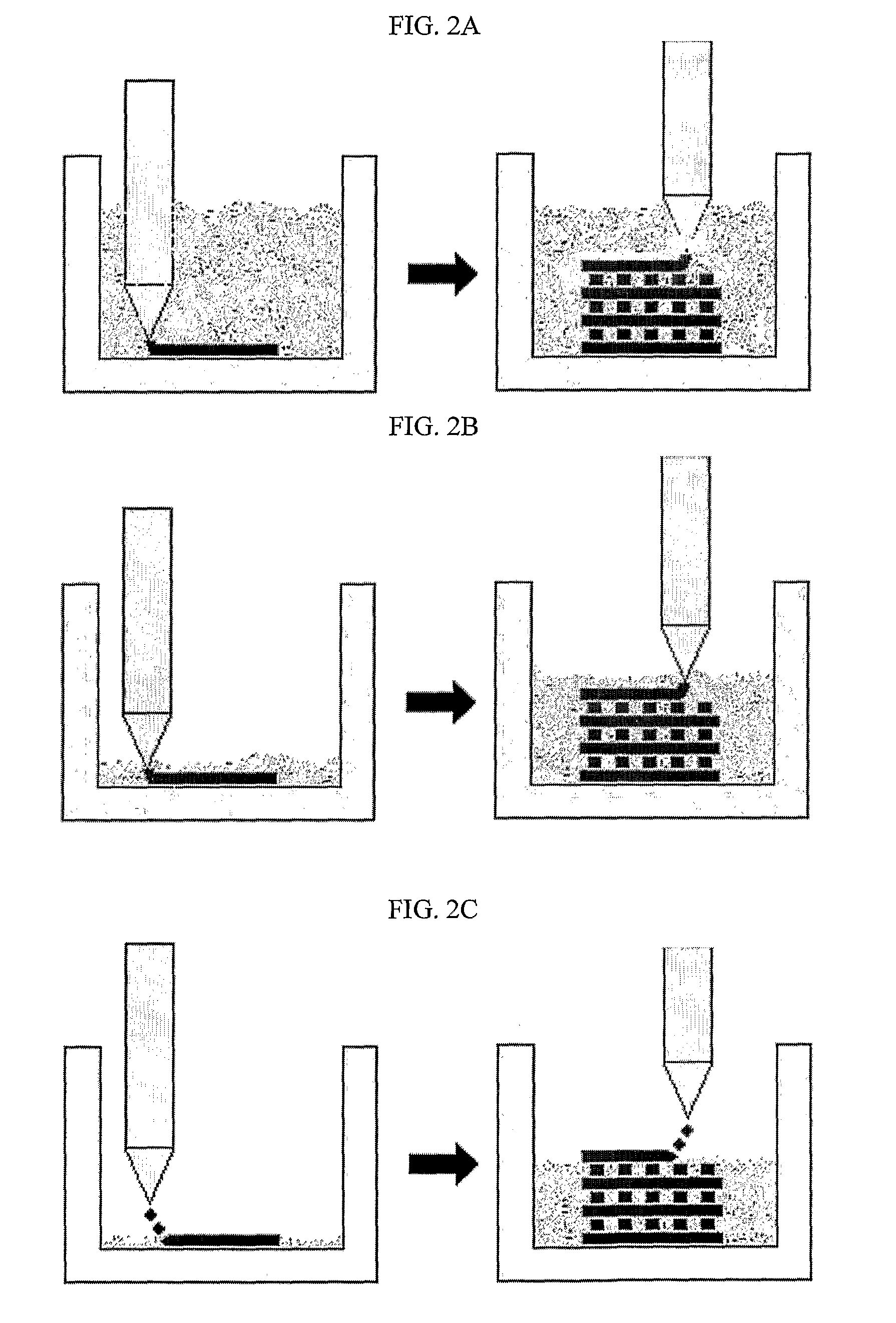Layered Manufacturing Utilizing Foam As A Support And Multifunctional Material For The Creation Of Parts And For Tissue Engineering
a multifunctional material and foam technology, applied in the field of creating scaffolds, can solve the problems of destroying the foam, destroying the foam, and unable to direct print into a denser foam,
- Summary
- Abstract
- Description
- Claims
- Application Information
AI Technical Summary
Benefits of technology
Problems solved by technology
Method used
Image
Examples
Embodiment Construction
[0041]The invention was driven by a desire to develop a method for fabricating a three dimensional article using solid freeform fabrication techniques, wherein the three dimensional article is built on a foamy, spongy or frothy supporting material rather than on a liquid support and therefore avoid problems created by difference in density between scaffolding materials and supporting materials. Accordingly, the invention includes a solid freeform fabrication method of creating a three-dimensional article built at least in part from scaffolding layers, the method comprising providing a scaffolding material, providing a supporting material in a shape of a foamy layer, and contacting the scaffolding material with the foamy layer to form at least one scaffolding layer and thereby creating the three dimensional article.
[0042]The inventors have discovered that the above described shortcomings of utilizing liquids as a printing medium can be overcome by printing into a foam instead of a li...
PUM
| Property | Measurement | Unit |
|---|---|---|
| Shape | aaaaa | aaaaa |
| Amphoteric | aaaaa | aaaaa |
Abstract
Description
Claims
Application Information
 Login to View More
Login to View More - R&D
- Intellectual Property
- Life Sciences
- Materials
- Tech Scout
- Unparalleled Data Quality
- Higher Quality Content
- 60% Fewer Hallucinations
Browse by: Latest US Patents, China's latest patents, Technical Efficacy Thesaurus, Application Domain, Technology Topic, Popular Technical Reports.
© 2025 PatSnap. All rights reserved.Legal|Privacy policy|Modern Slavery Act Transparency Statement|Sitemap|About US| Contact US: help@patsnap.com



